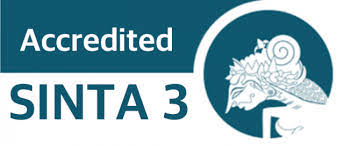INVESTMENT FEASIBILITY COMPARATIVE ANALYSIS OF GREEN BUILDING AND CONVENTIONAL IN DKI JAKARTA
Abstract views: 215 | pdf downloads: 246
Abstract
Sustainable buildings generally demonstrate a friendly environment, save energy and reduce operational costs, thus opening up significant investment opportunities in green buildings of the office property type. It is a shame that currently there are still very few office building developers who apply the green building concept, meanwhile the green building concept provides 31% greater profits than conventional buildings. This study aims to analyze the financial feasibility of four office buildings which are divided into two categories, namely category one (building 1 and Building 3) with a grade A building type and category two (building 2 and building 4) with a grade B building type. Building 1 and building 2 has received green building certification issued by GBCI. Building 2 and building 4 are buildings with a conventional concept. Calculation analysis is carried out using the Net Present Value (NPV), Internal Rate of Return (IRR) and Payback Period (PP) methods. Based on the results of the analysis, from the two categories of building types, the results showed that the NPV of each building was said to be financially feasible with an NPV ratio of 294% (category 1) and 162% (category 2). The IRR obtained exceeds the MARR value, with a comparison of 54% (category 1) and 21% (category 2). The payback period is less than the project investment period, namely 20 years, with a difference of 5 years (category 1) and 3 years (category 2). The office buildings with the highest and best NPV are Building 1 and Building 3 (category 1), so that even though the construction costs and green building design planning costs incurred are higher, in the research object of each building there are quite significant differences in NPV and IRR and It is hoped that all new construction and renovation work carried out by developers can apply the green building concept.
References
Anastasia, N. (2011). Konsep Penilaian Properti dengan Sertifikat ''Green Building''. Seminar Nasional Lingkungan Hidup (pp. 10-21). Surabaya: Universitas Kristen Petra.
Andini, R., & Utomo, C. (2014). Analisa Pengaruh Penerapan Konsep Green Building Terhadap Keputusan Investasi pada National Hospital Surabaya. Jurnal Teknik POMITS Vol.3, No.2, C 53-56.
Green Building Council of Australia. (2023). Exploring Green Star. Diakses melalui Green Building Council Australia: https://new.gbca.org.au/green-star/exploring-green-star/
Harvard Catalyst. (2021). Getting Started With Mixed Methods Research. Diakses melalui https://catalyst.harvard.edu/wp-content/uploads/2021/03/CEP-website_MMR-2-pager.pdf
Kristiadi, A., & Yuwono, B. (2023). Analisis Payback Period Pada Green Building Dari Segi Konservasi Air . Jurnal Rekayasa Lingkungan Terbangun Berkelanjutan, 139-144.
Lubis, M. S. (2022). Bisnis Indonesia. Diakses melalui https://bisnisindonesia.id/article/3-faktor-baru-pengaruhi-nilai-bangunan-di-era-green-building
Putri, C. A., & Prabowo, A. W. (2023). Simulasi Monte Carlo dan Real Option Valuation Pada Perhitungan Kelayakan Finansial Dormitory Politeknik Astra. Technologic, 59.
Schumann, B. (2010). Impact of Sustainability on Property Values. Frankfurt: University of Regensburg.
Silalahi, F. D., Rozikin, K., Rutdjiono, D., & Setiawan, N. D. (2021). Pemanfaatan Metode Moving Average Dalam Sistem Informasi Pendukung Keputusan Pembelian Branag Berdasarkan Peramalan Penjualan Dengan Berbasis Web. Jurnal Ilmiah Elektronika dan Komputer, 198-207.
Sudarman, Syuaib, M. S., & Nuryuningsih. (2021). Green Building: Salah Satu Jawaban Terhadap Isu Sustainability Dalam Dunia Arsitektur. Jurnal Teknosains, Volume 15, Nomor 3, 329-338.
Copyright (c) 2024 Jurnal Infrastruktur

This work is licensed under a Creative Commons Attribution-NonCommercial-ShareAlike 4.0 International License.














